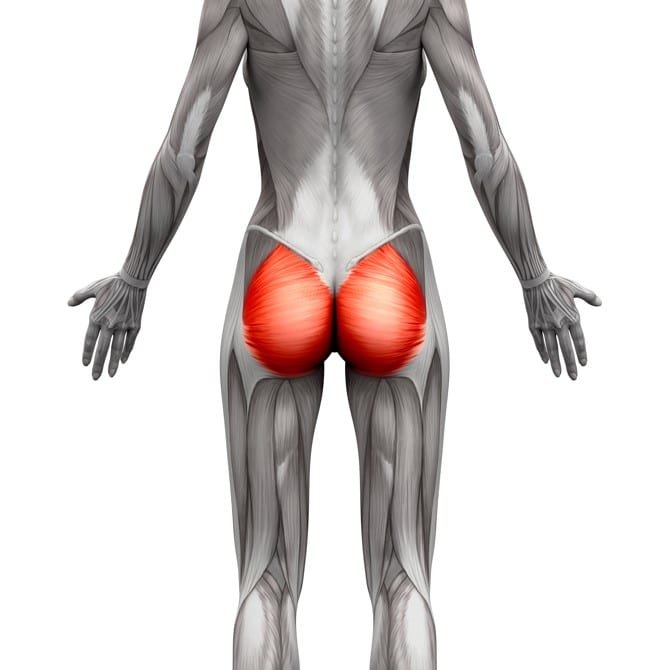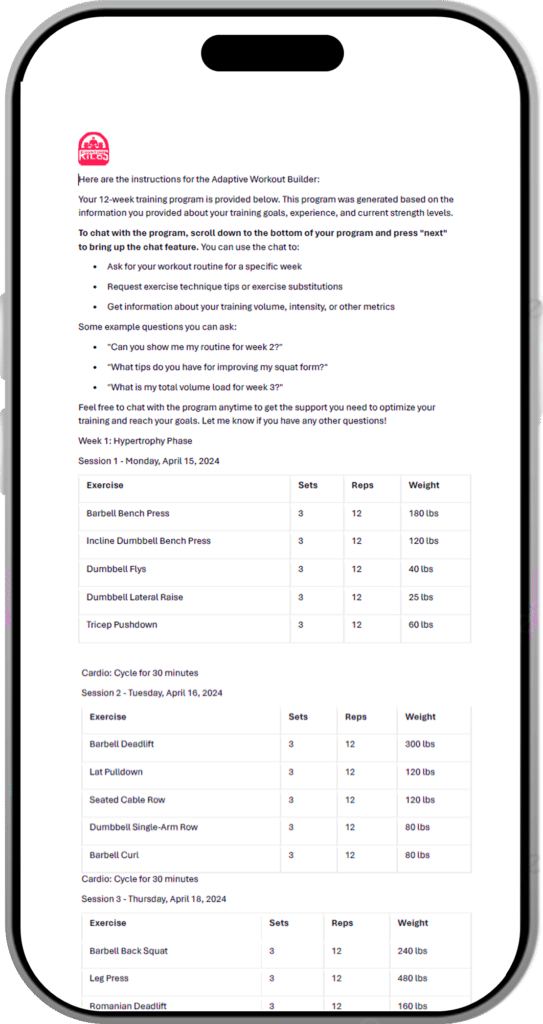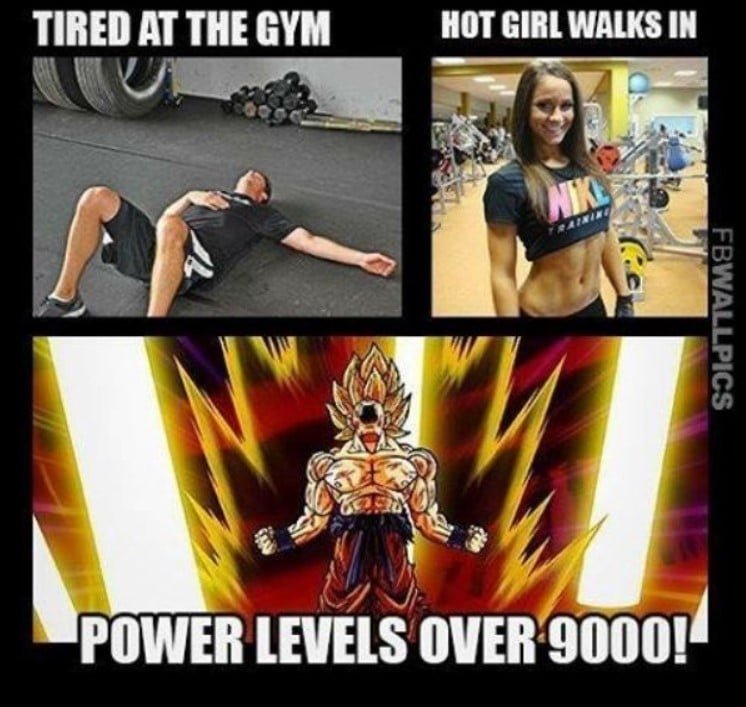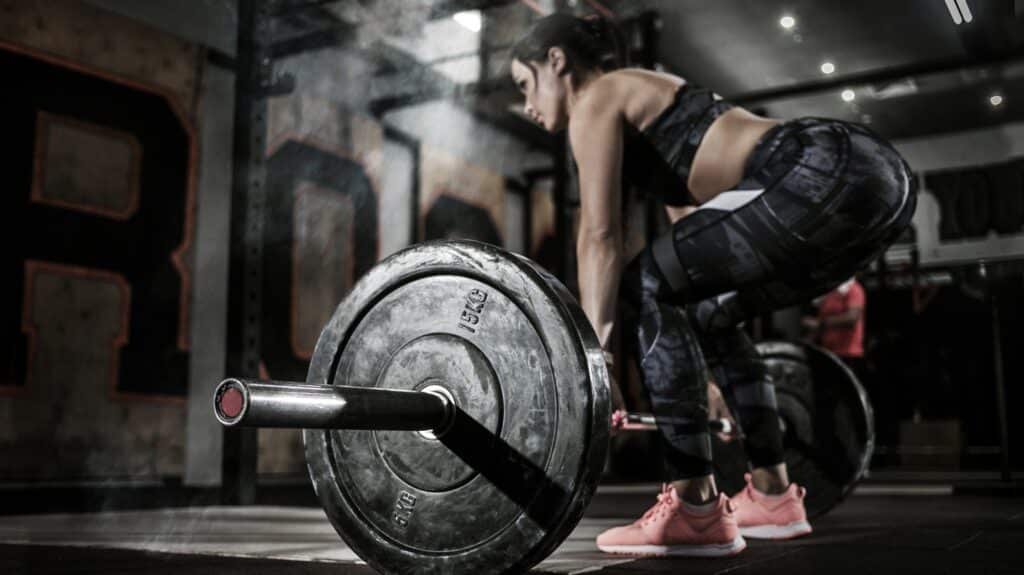Your glutes are a powerhouse of your lower body, playing a pivotal role in various movements and activities. Neglecting the development of these muscles can limit your overall strength and agility. It’s not just about aesthetics; it’s about enhancing your physical performance and reaping the benefits of a strong lower body.
Let’s dive into the world of glute extensions and unlock your lower body potential. Trust me, by the end of this article, you’ll be as excited about glute training as I am about a fresh cup of coffee on leg day.
Key Takeaways
- Glute strength is crucial for overall lower body health, performance, and injury prevention
- Proper form and technique are essential for effective glute extensions
- Incorporating glute extensions into a well-rounded lower body program can lead to significant improvements in strength and function
- Progressive overload and varied training methods are key to continual glute development
- Nutrition and recovery play vital roles in optimizing glute growth and strength gains
Table of contents

Introduction to Glute Extensions
Alright, let’s talk about the elephant in the room – or should I say, the donkey in the gym. Glute extensions are one of those exercises that people often overlook, thinking they’re just for Instagram models or bodybuilders. But let me tell you, if you’re serious about your lower body strength, athletic performance, or even just being able to climb stairs without sounding like a steam engine, you need to pay attention to your glutes.
Importance of Glute Strength
Your glutes aren’t just there to fill out your jeans. These powerhouse muscles play a crucial role in pretty much every lower body movement you can think of. From sprinting to jumping to simply walking up a flight of stairs, your glutes are working overtime.
But here’s the kicker – weak glutes can lead to a whole host of problems. I’m talking about lower back pain, knee issues, and even poor posture. It’s like trying to build a house on a shaky foundation – sooner or later, something’s going to give.
Strong glutes, on the other hand, are like the secret sauce to athletic performance. They improve your power output, speed, and overall stability. Plus, they help maintain proper alignment of your hips and spine, which is crucial for preventing injuries.

Understanding Glute Anatomy
Now, I know anatomy isn’t everyone’s cup of tea, but bear with me for a moment. Understanding your glute muscles is key to training them effectively.
Your glute complex consists of three main muscles:
- Gluteus Maximus: This is the big daddy of the glute muscles. It’s the largest and most superficial of the three, responsible for hip extension and external rotation.
- Gluteus Medius: Located on the outer surface of the pelvis, this muscle abducts the hip and helps stabilize the pelvis during single-leg activities.
- Gluteus Minimus: The smallest of the three, working alongside the gluteus medius to abduct the hip and stabilize the pelvis.
Glute extensions primarily target the gluteus maximus, but they also engage the other two muscles to some degree. It’s like a party where everyone’s invited, but the gluteus maximus is the one doing the Macarena in the middle of the dance floor.
Proper Technique for Glute Extensions
Alright, now that we’ve covered the basics, let’s get into the essentials of how to perform glute extensions properly. Because let’s face it, doing an exercise wrong is like trying to eat soup with a fork – you might be putting in the effort, but you’re not getting the results you want.
Equipment Options
First things first, let’s talk about the tools of the trade. You’ve got a few options when it comes to performing glute extensions:
- Back Extension Machine: This is your standard gym equipment, usually found gathering dust in the corner because people are too intimidated to use it. Don’t be that person.
- Roman Chair: Looks like a medieval torture device, works like a dream for your glutes.
- Stability Ball: For those of you working out at home or just like a challenge.
- Bodyweight Variations: No equipment? No problem. You can still get a killer glute workout with just your body weight.
Correct Form and Execution
Now, let’s break down the proper form for a glute extension. I’m going to use the back extension machine as an example, but the principles apply to all variations.
- Starting Position: Position yourself on the machine with your hips just off the pad. Your feet should be secured, and your upper body should be hanging down towards the floor. Think of yourself as a human question mark.
- Body Alignment: Keep your spine neutral. That means no arching or rounding of your back. Your body should form a straight line from your head to your hips.
- Movement Pattern: Here’s where the magic happens. Engage your core and squeeze your glutes to lift your upper body until it’s in line with your legs. Pause for a moment at the top, really feeling that glute contraction. Then, slowly lower back down to the starting position.
- Range of Motion: You want to aim for a full range of motion, but don’t hyperextend your back at the top of the movement. That’s a one-way ticket to Injury Town, and trust me, you don’t want to visit.
- Foot Placement: Your foot placement can change which muscles you target. A neutral foot position will hit your glutes and hamstrings equally. Pointing your toes out slightly will emphasize the glutes more, while pointing them in will target the hamstrings.

Common Mistakes and How to Avoid Them
Now, I’ve seen more botched glute extensions than I care to count. Here are some common mistakes and how to avoid them:
- Using Momentum: This isn’t a swing set, folks. Control the movement throughout the entire range of motion.
- Hyperextending the Back: Remember, we’re working the glutes, not auditioning for Cirque du Soleil. Keep that spine neutral.
- Neglecting the Core: Your core should be engaged throughout the entire movement. Think of it as your body’s built-in weight belt.
- Insufficient Range of Motion: Don’t be afraid to go deep. The more range of motion you use, the more muscle fibers you’ll recruit.
Muscle Activation Strategies
Now, let’s talk about getting the most bang for your buck. Here are some strategies to maximize muscle activation during glute extensions:
- Mind-Muscle Connection: Focus on squeezing your glutes throughout the entire movement. Imagine you’re trying to crack a walnut between your cheeks. Too graphic? Sorry, not sorry.
- Peak Contraction: At the top of the movement, really squeeze those glutes. Hold it for a second if you’re feeling spicy.
- Eccentric Control: Don’t just drop back down. Control the descent, taking 2-3 seconds to lower your body. This increases time under tension, which is great for muscle growth.
- EMG Data: Studies using electromyography (EMG) have shown that glute extensions can activate the gluteus maximus at over 60% of its maximum voluntary contraction. That’s some serious glute action, folks.
| Technique | Description | Benefit |
|---|---|---|
| Mind-Muscle Connection | Focus on squeezing glutes throughout movement | Improves muscle activation |
| Peak Contraction | Hold squeeze at top of movement | Increases muscle fiber recruitment |
| Eccentric Control | Slow, controlled descent | Increases time under tension |
| EMG-Guided Activation | Use EMG data to optimize form | Ensures maximum muscle recruitment |

Incorporating Glute Extensions into Your Workout
Alright, now that you’re a glute extension expert (well, maybe not expert, but at least you’re not a complete novice anymore), let’s talk about how to incorporate these bad boys into your workout routine.
Programming Considerations
First things first, let’s talk frequency. For optimal results, you’ll want to hit your glutes 2-3 times per week. Any less, and you’re shortchanging your gains. Any more, and you might end up walking like you’ve just dismounted a horse after a week-long cattle drive.
As for volume, aim for 3-4 sets of 10-15 repetitions. This rep range is great for both strength and hypertrophy. It’s like killing two birds with one stone, except the birds are muscle fibers and the stone is your awesome workout.
Now, let’s talk about progressive overload. This is crucial for continued progress. You can’t expect to do the same thing week after week and keep seeing results. That’s like expecting to get better at basketball by watching Space Jam on repeat. Here are some ways to progressively overload:
- Increase the weight
- Increase the number of reps
- Increase the number of sets
- Decrease rest time between sets
- Increase the range of motion
Lastly, don’t forget to pair your glute extensions with complementary exercises. Think of it like a fine wine pairing, except instead of wine and cheese, it’s glute extensions and squats.

Adaptive Workout Builder
STOP WASTING YOUR TIME WITHOUT A PLAN
- Personalized training programs based on user input.
- Customizable workouts targeting specific goals.
- Dynamic adjustments to workouts as progress is tracked.
- Options to request technique tips and exercise substitutions.
- Insights into training volume, intensity, and other metrics.
Sample Workout Routines
Now, let’s put all this knowledge into action with some sample workout routines. Remember, these are just examples. Feel free to adjust based on your fitness level and goals.
Lower Body Focus Day:
- Barbell Back Squats: 4 sets of 6-8 reps
- Romanian Deadlifts: 3 sets of 8-10 reps
- Glute Extensions: 3 sets of 12-15 reps
- Walking Lunges: 3 sets of 10 reps per leg
- Calf Raises: 3 sets of 15-20 reps
Full Body Workout Including Glute Work:
- Deadlifts: 4 sets of 5-6 reps
- Bench Press: 3 sets of 8-10 reps
- Glute Extensions: 3 sets of 12-15 reps
- Pull-Ups or Lat Pulldowns: 3 sets of 8-10 reps
- Dumbbell Shoulder Press: 3 sets of 10-12 reps
Glute-Specific Training Session:
- Hip Thrusts: 4 sets of 8-10 reps
- Glute Extensions: 3 sets of 12-15 reps
- Single-Leg Romanian Deadlifts: 3 sets of 10 reps per leg
- Banded Lateral Walks: 3 sets of 15 steps each direction
- Frog Pumps: 3 sets of 20 reps
Remember, consistency is key. Stick to your program, progressively overload, and before you know it, you’ll have glutes that could crack walnuts. Not that I recommend trying that, of course.

Advanced Techniques and Variations
Alright, hotshots. You’ve mastered the basics, and now you’re ready to take your glute game to the next level. Well, buckle up, buttercup, because we’re about to enter the advanced zone.
Adding Resistance
First up, let’s talk about adding some extra spice to your glute extensions with resistance. Because sometimes, bodyweight just doesn’t cut it anymore.
- Weight Plates or Dumbbells: Hold a weight plate or dumbbell close to your chest. Start light and work your way up. Remember, we’re trying to build glutes, not herniate a disc.
- Resistance Bands: Loop a resistance band around your neck (gently, please) and hold the ends in each hand. As you extend, the band will provide increasing resistance. It’s like a reverse bungee jump for your glutes.
- Chains: If you really want to feel like a badass, drape some chains over your back. The resistance increases as you extend, making your glutes work harder at the top of the movement. Plus, you’ll sound like a ghost from A Christmas Carol every time you move.
Unilateral Training
Next up, let’s talk about unilateral training. Because if Batman has taught us anything, it’s that working alone can be pretty effective.
Single-Leg Glute Extensions: These bad boys will not only target your glutes but also challenge your balance and core stability. It’s like trying to pat your head and rub your stomach at the same time, but for your lower body.
Unilateral training is great for addressing muscle imbalances between sides. We all have a dominant side (thanks, evolution), but that doesn’t mean we can’t strive for symmetry. Plus, it’ll help prevent you from looking like you’re always leaning to one side, which is only cool if you’re in a 90s boy band.
Tempo Manipulation
Last but not least, let’s talk about tempo manipulation. Because sometimes, it’s not about how much you lift, but how you lift it.
- Slow Eccentric Phase: Take 3-4 seconds to lower yourself back down. This increases time under tension, which is great for muscle growth. It’s like slow-motion for your muscles.
- Isometric Holds: Pause for 2-3 seconds at the top of the movement. Feel the burn, embrace the burn, become one with the burn.
- Explosive Concentric Movement: Push up as fast as you can while maintaining control. It’s like trying to launch yourself into space, except gravity always wins.
Remember, these advanced techniques are not for the faint of heart (or the weak of glute). Make sure you’ve mastered the basics before diving into these. And as always, listen to your body. If something feels off, it probably is.

Complementary Exercises for Glute Development
Alright, glute enthusiasts, let’s talk about spreading the love. While glute extensions are fantastic, they shouldn’t be the only trick in your booty-building bag. Let’s explore some complementary exercises that’ll have your glutes singing praises (and possibly curse words during the workout).
Compound Movements
First up, we’ve got the heavy hitters – compound movements. These exercises recruit multiple muscle groups and joints, giving you more bang for your buck. They’re like the all-you-can-eat buffet of the exercise world.
- Deadlifts: The king of posterior chain exercises. We’ve got three main variations:
- Conventional: The classic. Feet hip-width apart, grip the bar, and lift. Simple, yet devastatingly effective.
- Romanian: Keep those legs straighter and focus on the hip hinge. Your hamstrings will hate you, but your glutes will thank you.
- Sumo: Wide stance, hands inside the legs. It’s like doing a conventional deadlift while trying to straddle a small horse.
- Hip Thrusts: The exercise that’ll have you making awkward eye contact with everyone in the gym. But trust me, it’s worth it.
- Barbell: The standard. Load up that barbell and thrust away.
- Single-leg: For when you want to hate life equally on both sides.
- Elevated: Put your shoulders on a bench for an increased range of motion. It’s like hip thrusts on steroids (figuratively, of course).
- Squats: The exercise everyone loves to hate, but can’t ignore.
- Back Squats: The classic. Bar on your back, squat down, try not to cry.
- Front Squats: Bar in front, elbows up, question your life choices.
- Bulgarian Split Squats: One leg back on a bench, descend into leg day hell.
Isolation Exercises
Now, let’s talk about isolation exercises. These target specific muscles and are great for really feeling the burn in your glutes. They’re like the precision instruments of your glute-sculpting toolkit.
- Glute Bridges: Lie on your back, feet flat on the ground, and lift those hips. It’s like hip thrusts for beginners, or for when you’re too lazy to set up a barbell.
- Cable Kickbacks: Strap your ankle to a low cable pulley and kick back. Try not to kick anyone in the process.
- Frog Pumps: Lie on your back, soles of your feet together, knees out. Thrust up. Yes, you’ll look ridiculous. No, you shouldn’t care.
- Banded Lateral Walks: Put a resistance band around your ankles and waddle side to side. Embrace your inner penguin.
Remember, variety is the spice of life, and it’s also the key to well-rounded glute development. Mix and match these exercises to keep your workouts fresh and your glutes guessing. Just don’t try to do all of them in one session, unless you enjoy not being able to sit down for a week.
Conclusion: Your Journey to Glute Greatness
And there you have it, folks – everything you need to know about mastering glute extensions and building a backside that would make Sir Mix-a-Lot proud. Remember, Rome wasn’t built in a day, and neither is a stellar set of glutes. It takes time, consistency, and a whole lot of squeezing.
But don’t get discouraged if you don’t see results immediately. Trust the process, stay committed to your training and recovery, and before you know it, you’ll be the proud owner of glutes that could crack walnuts (though I still don’t recommend trying that).
So get out there, embrace the burn, and remember – in the world of fitness, the posterior is superior. Now go forth and conquer those glute extensions!




Your blog is a treasure trove of valuable insights and thought-provoking commentary. Your dedication to your craft is evident in every word you write. Keep up the fantastic work!